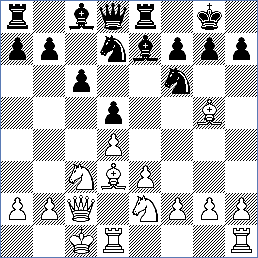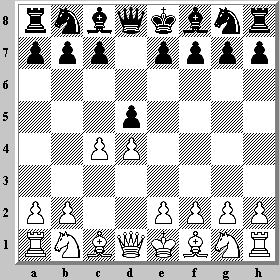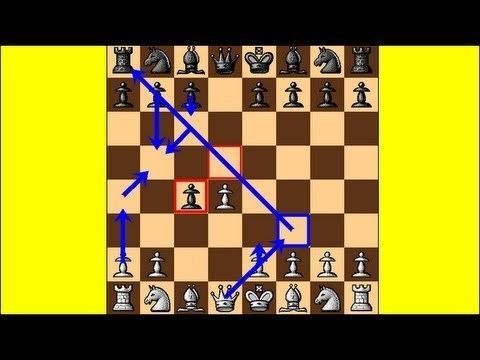a b c d e f | b c d e f g | |
 | ||
Chess openings the queen s gambit
The Queen's Gambit is a chess opening that starts with the moves:
Contents
- Chess openings the queen s gambit
- Play the queen s gambit declined like kasparov gm varuzhan akobian
- Overview
- Main variations
- References
The Queen's Gambit is one of the oldest known chess openings. It was mentioned in the Göttingen manuscript of 1490 and was later analysed by masters such as Gioachino Greco in the seventeenth century. In the eighteenth century it was recommended by Phillip Stamma, and is sometimes known as the Aleppo Gambit in his honour. During the early period of modern chess, queen pawn openings were not in fashion, and the Queen's Gambit did not become common until the 1873 tournament in Vienna.

As Steinitz and Tarrasch developed chess theory and increased the appreciation of positional play, the Queen's Gambit grew more popular, reaching its zenith in the 1920s and 1930s, and was played in all but two of 34 games in the 1927 world championship match between José Raúl Capablanca and Alexander Alekhine.

After World War II, it was less frequently seen, as many Black players moved away from symmetrical openings, tending to use the Indian Defences to combat queen pawn openings.

The Queen's Gambit is still frequently played and it remains an important part of many grandmasters' opening repertoires.
Play the queen s gambit declined like kasparov gm varuzhan akobian
Overview

With 2.c4, White threatens to exchange a wing pawn (the c-pawn) for a center pawn (Black's d-pawn) and dominate the center with e2–e4. This is not a true gambit, as Black cannot hold the pawn, for example: 1.d4 d5 2.c4 dxc4 3.e3 b5? (Black tries to guard his pawn but should pursue development with 3...e5!) 4.a4 c6? 5.axb5 cxb5?? 6.Qf3! winning a piece.

The Queen's Gambit is divided into two major categories based on Black's response: The Queen's Gambit Accepted (QGA) and the Queen's Gambit Declined (QGD). In the QGA, Black plays 2...dxc4, temporarily giving up the center to obtain freer development. In the QGD, Black usually plays to hold d5. Frequently Black will be cramped, but Black aims to exchange pieces and use the pawn breaks at c5 and e5 to free his game.
Main variations
After 1.d4 d5 2.c4:

Technically, any Black response other than 2...dxc4 (or another line with an early ...dxc4 that transposes into the QGA) is a Queen's Gambit Declined, but the Slav, Chigorin Defense, and Albin Counter Gambit are generally treated separately. There are so many QGD lines after 2...e6, that many of them are distinctive enough to warrant separate treatment. The Orthodox Defense and the Tarrasch Defense are two important examples. See Queen's Gambit Declined for more.
There are many other possible responses:
